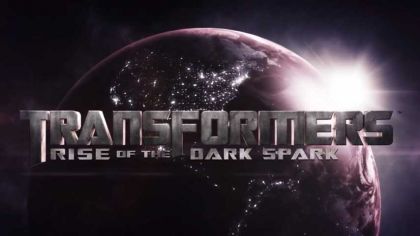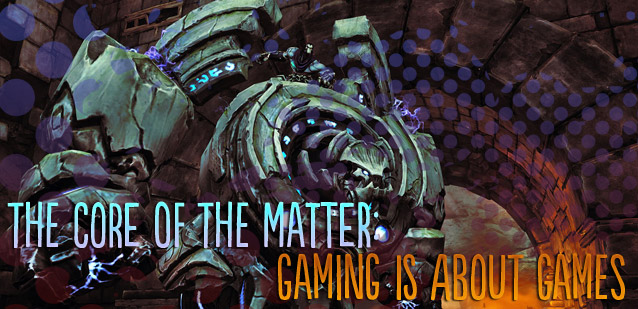

Game Rant’s Anthony Mole reviews Sumioni Demon Arts
Prior to the Vita launch, players had many games on their mind: Uncharted: Golden Abyss, Lumines and Rayman Origins. These were all of the no-brainer titles, their quality was near-guaranteed. But for the longest time there was one title without a North American release date: Sumioni: Demon Arts. This intriguing and beautiful platformer was only confirmed for a Japan release, that is, until XSeed chose to localize it. Was it worth the wait?
The story of Sumioni: Demon Arts is that of an ink-god named Agura, he has been summoned by the inkmaster Tengan to help restore peace to ancient Japan. The thing is, Agura is a very lazy demon, and when he is first summoned all he wants to do is sleep. Agura and the other characters all have their little quirks that make them enjoyable, but because the story is told sparingly throughout the game’s 30 stages one never gets a real reason to be attached to them.
That being said, the story is a large part of Sumioni, as players will mostly be replaying the game to view all of the six endings. The game is broken up into stages – there are 30 in total, and more are said to come in the future as DLC. At certain points the stages’ storyline will branch off, with the players’ skill factoring into how they progress. For example, if one were to get a 3 star rating they will move onto a more difficult stage, which in turn will allow them to receive a better ending. However, if they get two stars or less, they will stay on their current story path – which leads to a “less favorable” ending. Once a player has unlocked a stage, the next time they come to it in a replay they will be given the option to skip it and stay on their story path, a tool that comes in handy for those who want to experience every little bit of Sumioni.
Players can earn three stars by completing the stage as quickly as possible, while at the same time taking very little damage. As the game progresses, getting three stars becomes more difficult, meaning some will find it very difficult to unlock all the endings. This is where Sumioni’s flaws start to show, the game never explicitly tells players how to get three stars. At the end of a stage, they are greeted by a screen that says “Time” and “Damage” with the player’s results presented. However, players are never told what “Damage” means. Does it mean the amount of damage they inflict, or the amount of damage they receive? The game’s manual didn’t even offer the answer, and after finally figuring out “Damage” referred to how little damage players took, I was finally able to progress past the game’s first story line.
This issue would have been alleviated slightly if gamers could at least restart a stage after completing it. Instead, players are forced to move onto the next stage, where they can quit back to the menu or just continue playing. The problem? When players have to quit to the main menu they’re forced to watch the unskippable intro logos again, and they have to reload their data – each time.
Thankfully, the actual gameplay makes up for the UI flaws, as developer Acquire was able to craft quite a fun game. Each of the title’s 30 stages can be completed anywhere between one minute and three minutes. Players will spend most of their time in these stages at the boss section. It’s a shame the actual platforming stages aren’t longer, but the levels themselves are still very fun.
The game isn’t just combat though, as Agura has the ability to use ink to his advantage. The lovable ink demon can paint platforms into existence (controlled by sliding one’s finger across the touch screen) to better maneuver around the environment. Agura can also use the ink to create thunder clouds or light enemies ablaze. Lastly, players are also able to summon gods into existence, whose powers come in handy during the boss fights.
Sumioni: Demon Arts has an absolutely gorgeous art style and the sumi-e inspired art will most likely remind gamers of Okami – since it’s easily one of the best parts of the game.
The amount of time players will spend in Sumioni: Demon Arts all depends on their determination to see all six endings. The first ending can be completed in around twenty or thirty minutes, however as the stages become progressively difficult, players will find themselves spending a few more hours with the title. All in all it should probably take less than eight hours for the average gamer, and that’s being generous, to unlock all the endings. As said earlier, the story is charming enough to keep the player going but some may find themselves putting the title away out of frustration.
Sumioni: Demon Arts is a niche game if there ever was one. The gameplay is fun but challenging, and players will definitely feel rewarded each time they unlock a new ending. Issues with the user interface are bothersome and make it harder to recommend the game to everyone. That said, anyone who can look past these minor flaws will find an enjoyable game, even if it is big on brevity.
Sumioni: Demon Arts is available now for the PS Vita through PSN.
–
Follow me on Twitter @AnthonyMole




 Transformers: Rise of the Dark Spark: Fix for BSOD, Files corrupted error, Co-op, Sound, FPS and Lagging issues
Transformers: Rise of the Dark Spark: Fix for BSOD, Files corrupted error, Co-op, Sound, FPS and Lagging issues The Greatest Fiction From Within Other Fiction
The Greatest Fiction From Within Other Fiction The Core of the Matter: Gaming is About Games
The Core of the Matter: Gaming is About Games Path Of Exile: Low Level, Poor Man's Ranger Guide
Path Of Exile: Low Level, Poor Man's Ranger Guide Tearaway Unfolded Wiki – Everything you need to know about the game .
Tearaway Unfolded Wiki – Everything you need to know about the game .